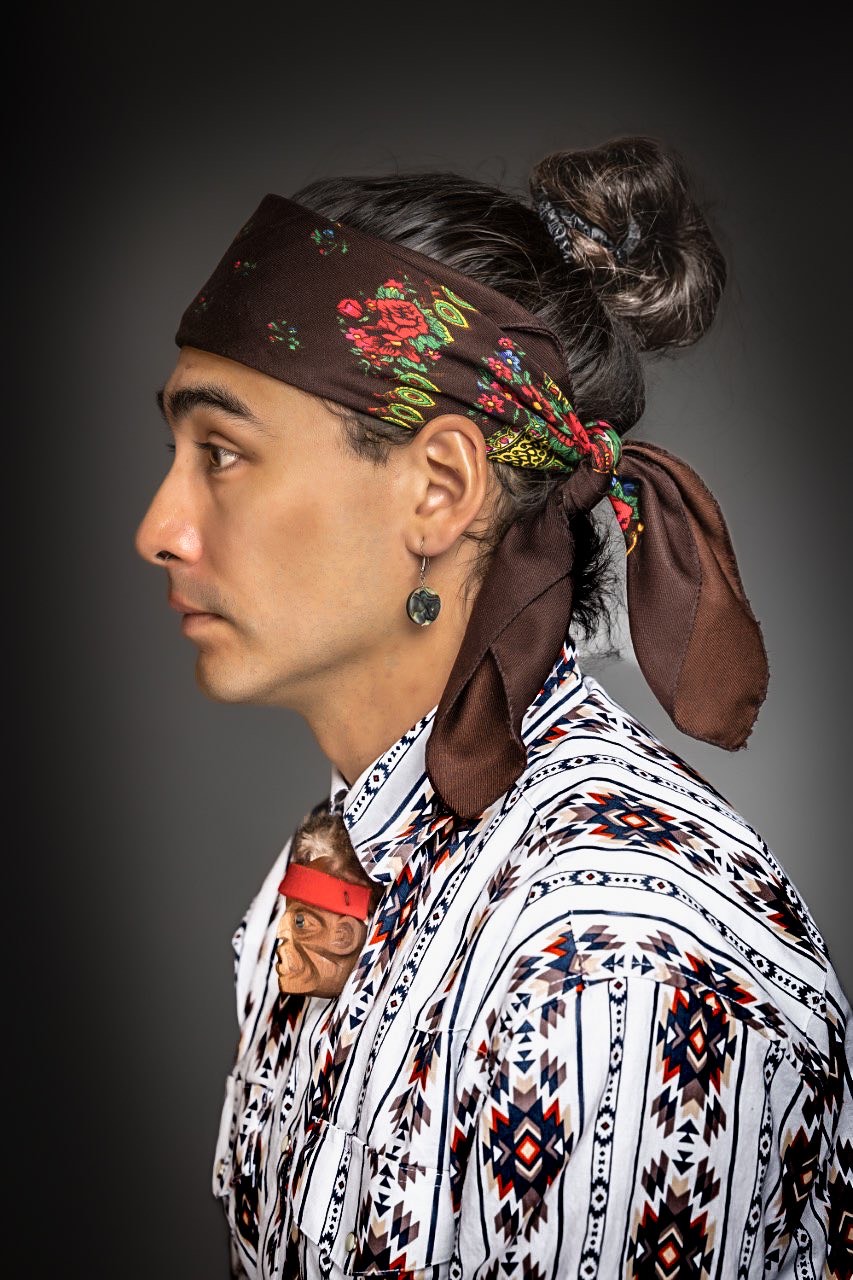
If the Sky Were Orange: Art in the Time of Climate Change
Part One – Indigenous Futures: Julian Brave NoiseCat on Cannupa Hanska Luger’s Future Ancestral Technologies: New Myth
A white desert at sunset, a future not so distant. Two figures enter the frame. Their silhouettes, one feminine, the other masculine, are human. Except no human is mere mortal wearing this much regalia. These two are Monster Slayers, supernatural heroes who rid the world of man-eaters, earth-churners, and civilization-destroyers so that humans can take our place, and so that places can claim their humans. All cultures, Indigenous and non-Indigenous alike, tell stories of Monster Slayers, whose feats intertwined with Creation. Except these two aren’t from the past.
While they are supernatural, they feel super familiar—like, maybe, they could be you. Their regalia consists of bodysuits sewn and crocheted with rainbow geometrics, white blades of unknown manufacture, fabric wings, pieces of sports equipment like hockey gloves and shin pads, head coverings that look like crosses between Hollywood’s Predator, party hats, and something vaguely Bedouin, and at least one glove-like thing with fringes hanging to the sand.
In Ceremony, it is said that dancers, performers, and practitioners do not merely represent the beings embodied by our regalia and movements; we transform into them. These future ancestors, who could be us, have taken on the greater-than-human power of Monster Slayers in part by donning materials that could be rummaged from your garage. Their outfits are, admittedly, a bit ridiculous. Fun, if not funny. Because the Monster Slayers of Indigenous lore are that, too.
To fight climate change, we don’t need more technologies than the ones already at our disposal: batteries, solar panels, culture, imagination. The monsters we must slay have been incorporated, conglomerated, and elected. The emissions they produce are broiling our planet at an unprecedented pace.
Capitalism’s gas cooks on colonialism’s stove of industry, infrastructure, and ideology. In 2016, Cannupa Hanska Luger’s people, the Standing Rock Sioux, took on the Dakota Access Pipeline, which they call the “Black Snake,” as well as its political and corporate backers. Protesters transformed into “Water Protectors” and “Black Snake Killaz”—into Monster Slayers.
Your people were once Monster Slayers, too. If we are to survive and restore a more just relationship between humans and the more-than-human world, you will have to slay monsters again.

About Cannupa Hanska Luger
Cannupa Hanska Luger uses video, sculpture, performance, and installation to communicate stories about 21st century Indigeneity. His work reflects a deep engagement with and respect for diverse materials, the environment, and community. Luger has been the subject of over 21 solo exhibitions. He was a 2022 Guggenheim Fellow, among other awards. Luger lives and works in Glorieta, New Mexico. He is an enrolled member of the Three Affiliated Tribes of Fort Berthold and is of Mandan, Hidatsa, Arikara, Lakota, and European heritage. Learn more about the artist at cannupahanska.com.
About Julian Brave NoiseCat

Julian Brave NoiseCat (Secwepemc/St’at’imc) is a writer, filmmaker, and journalist. He has written for The New York Times, The Washington Post, and The New Yorker, and was awarded the 2022 American Mosaic Journalism Prize. In 2021, NoiseCat was named to the TIME100 Next list of emerging leaders. His first book, We Survived the Night, and first documentary film are forthcoming.

